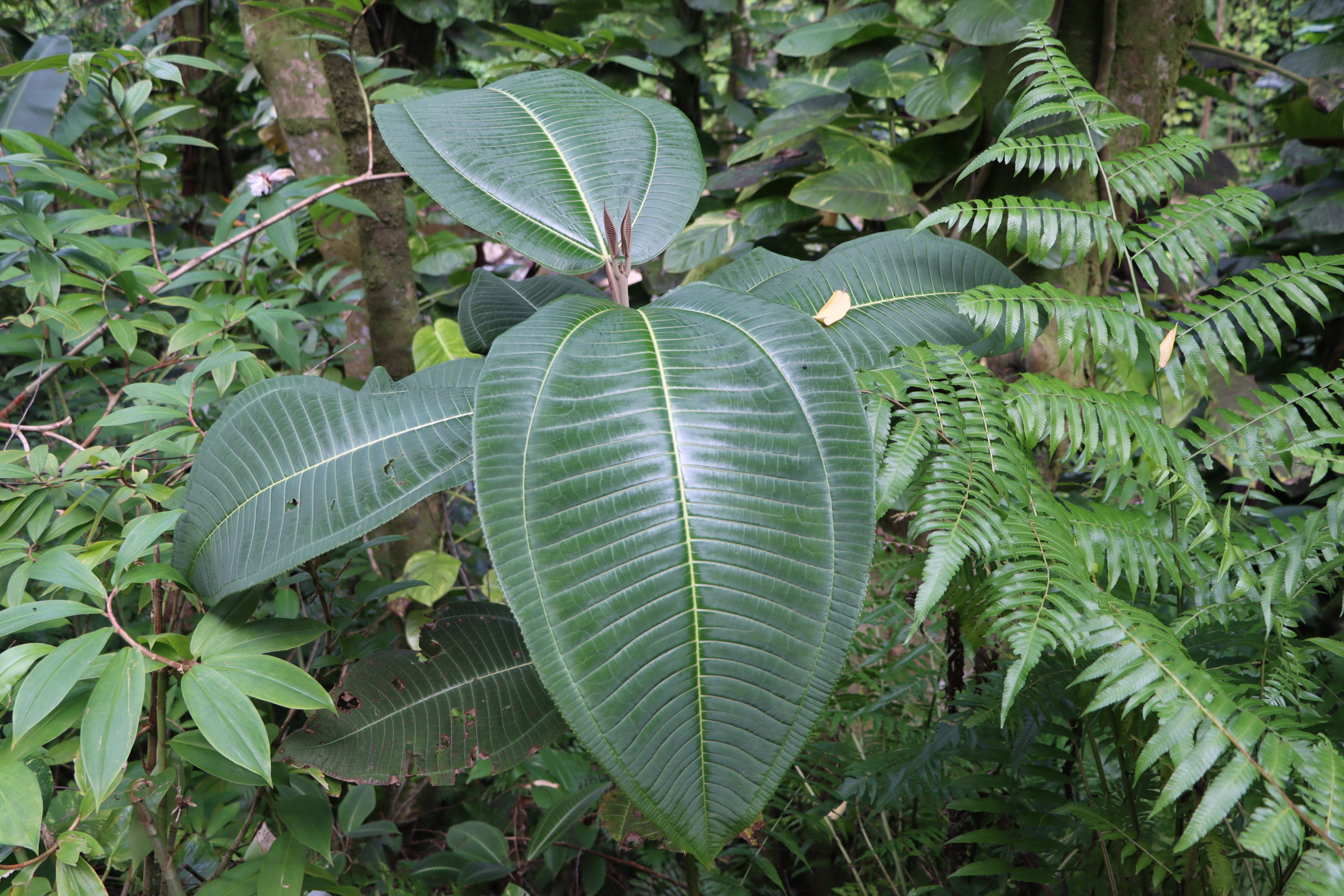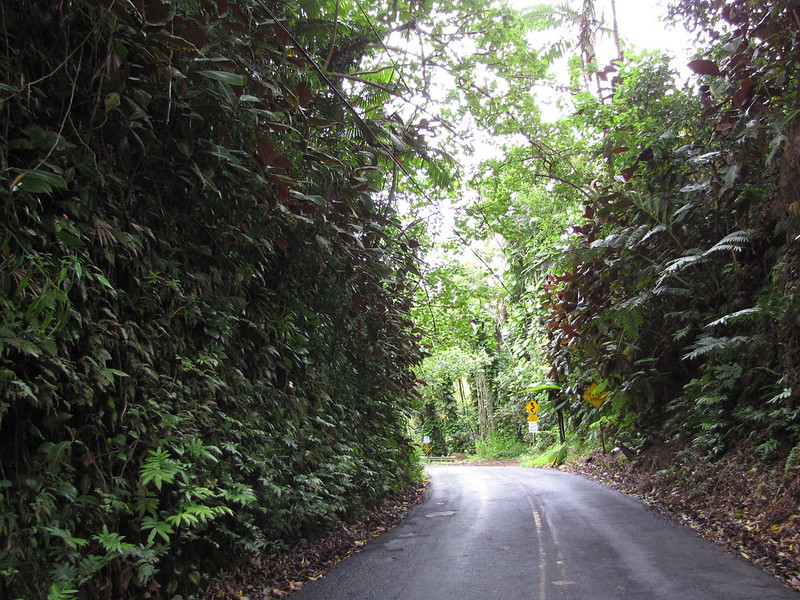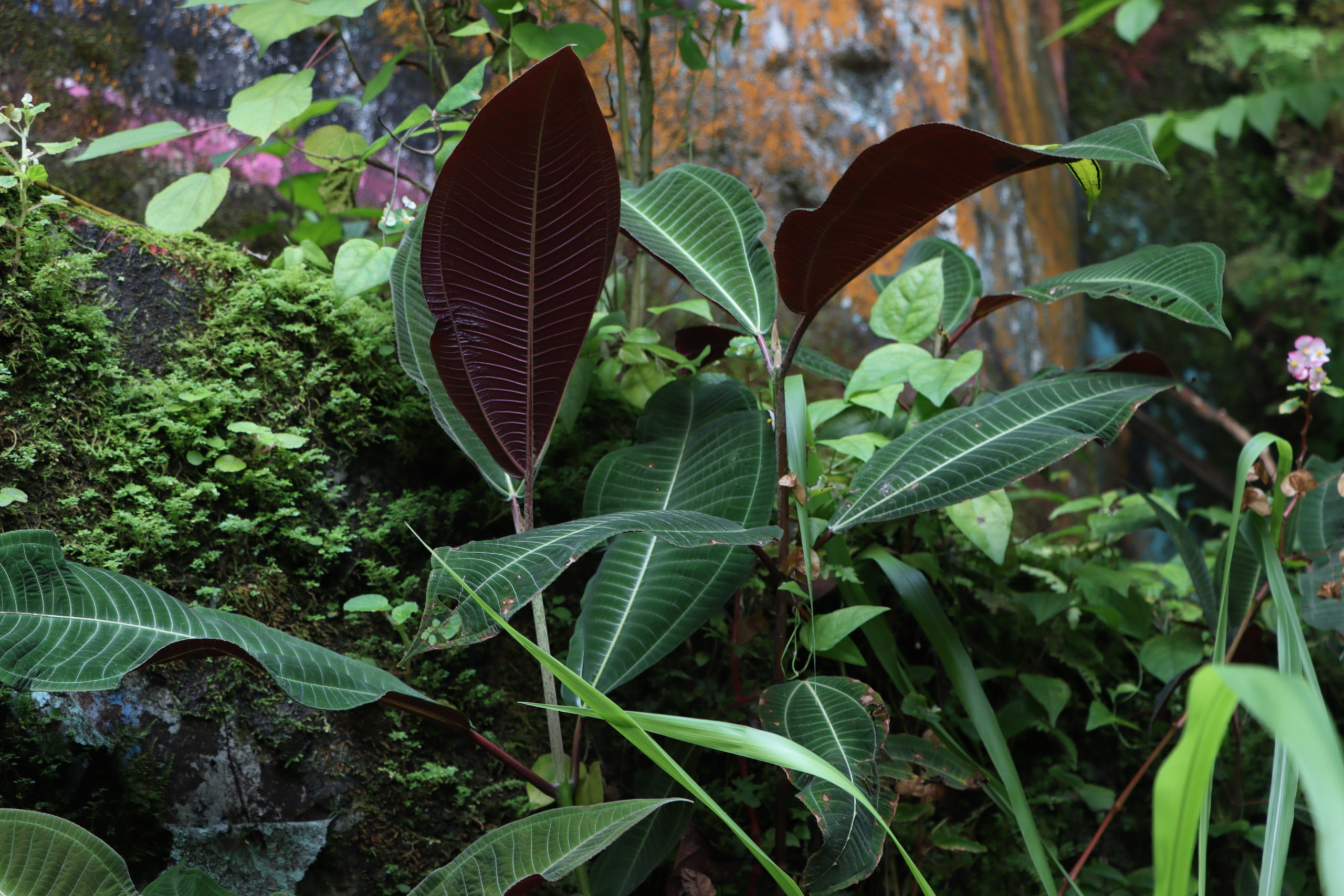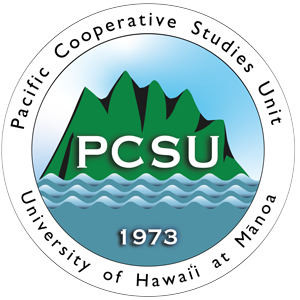Miconia
Miconia was imported to Hawaii Island as a botanical specimen sometime between the late 1950s/early 1960s. According to lore, the first imported plants died, and the pot was abandoned under a dark greenhouse bench on private property. Sometime later, new plants germinated in the discarded pot. The grower was amazed at the resilience of the miconia plant. (In hindsight, this was a good indicator of how invasive miconia would become.) The miconia plants were then shared among plant enthusiasts on the East side of the Big Island, including the Hirose nursery.
Dr. Forsberg, an outstanding botanist specializing in the Pacific, warned authorities in 1971 about the destructive nature of Miconia. It is the one plant that could really destroy the Hawaiian native forests, he said. By that time, miconia was already wreaking havoc in the islands. Studies have shown that 1 tree can produce 3 to 9 million viable seeds in 1 year, remaining viable for (at least) 19 years in the soil. The build-up of seed deposits in the seed bank makes mechanical and chemical eradication almost impossible. Today, Miconia is listed as a state noxious weed, as one of Hawaii’s Most Invasive Horticultural Plants, and is listed as one of the “World’s 100 Worst Invasive Alien Species“.
Impacts:
- Forms thick stands, shades out native plants and completely takes over moist and wet forests creating a monotypic forest
- Forms an umbrella over the watershed, reducing the amount of rainwater that seeps into the watershed
- Shallow root systems promote erosion, degrading the quality of surface water and increasing sedimentation of nearshore reefs
- Sand-grained sized seeds easily spread by birds and other animals when they eat the fruit. Seeds also spread by people when contaminated dirt or mud sticks to shoes, clothing, equipment, or vehicles
- Introduced to Tahiti in 1937 and has since overwhelmed two-thirds of Tahiti’s forests, and is directly responsible for threatening 25% of their native forest species with extinction
- Self Fertilizing- One sand sized seed, eaten by a bird and excreted far away, can create a new monotypic forest
Description:
- Grows up to 50 feet with broad distinct leaves and shallow roots
- Large oval-shaped leaves, green on top, purple underneath, with three main midribs running from stem to leaf-tip, each leaf can get up to 3′ wide
- Flowers are small in size, white to light pink in color, grow on a stalk in clusters
- Fruits are plentiful, dark purple, sweet and attractive to birds
Miconia (Miconia calvescens)



Photos (L-R): BIISC, Forest & Kim Starr, BIISC
Controlling Miconia
Physical control: Smaller saplings can be pulled out by hand. Cut mature trees and repeat as needed. Multiple stems will regrow from the stump. Dispose of green waste to prevent vegetative reproduction.
Chemical control: Application method basal-bark thin line application.
- Use an oil-based triclopyr product. Always read the label thoroughly before using any pesticide to ensure you are using the product in the correct manner prescribed by law.
- Directions. The herbicide is dripped in a continuous line around the base of the Miconia trunk. No bark needs to be removed, but it is a good idea to wipe away the moss and any soil that is present.
Biocontrol: The miconia butterfly (Euselasia chrysippe) is a potential biocontrol candidate for Hawai‛i. In its caterpillar stage, the herbivore miconia butterflies feed in tight-knit groups of 40-80 or more on the leaves of miconia.
